Crossandra: what it looks like, planting features and care rules
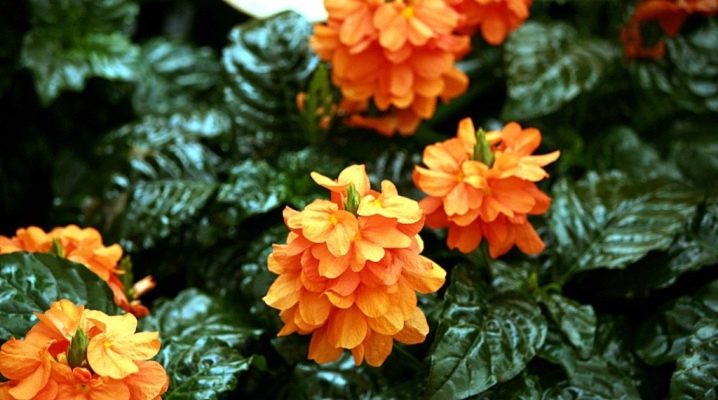
The primary purpose of indoor plants is to enrich the interior of the house with oxygen. The second is to add beauty to the rooms. Crossandra copes with the assigned tasks without much hassle.
This tropical plant was introduced to European countries over 250 years ago. Although, until 2000, the crossandra was familiar only to breeders. Long-term studies and experiments of professionals helped to adapt the plant to the room environment, after which flower growers became interested in crossandra. The nature of this flower is not simple, the plant requires special attention. By strictly following the rules of maintenance, growers will see the reaction of the crossandra in the form of bright blooms and long life.
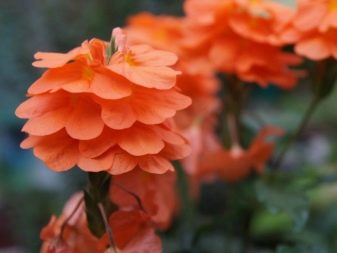

Description
The very beautiful name of the crossandra is made up of the Greek phrase meaning "man's fringe". Thanks to the hard work of breeders, the plant has managed to be ideally cultivated for growing at home. Novice growers will not be able to cope with this flower right away, only experienced owners of mini-gardens will be able to find a common language with it.
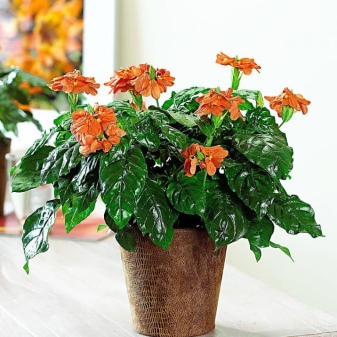
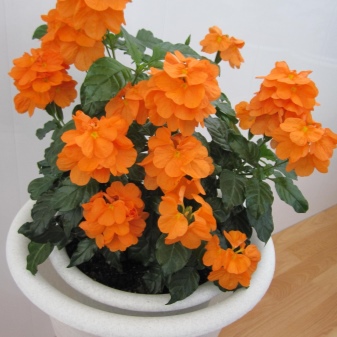
In a botanical environment, crossandra belongs to the acanthus family. In appearance it resembles a shrub with a lot of leaves. In the wild, the flower grows up to one meter in height; domestic specimens, unfortunately, do not differ in such sizes.
A distinctive feature of the crossandra is its rapid growth. - its branchy shoots increase in length at the maximum speed allowed for the plant. The main thing is to pinch the sprouts in a timely manner so that they are filled with strength.

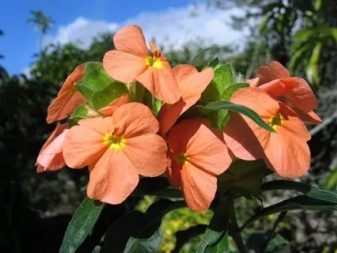
The deciduous part of the represented flower is distinguished by a bright green glossy surface. The length of the leaf plate ranges from 3-9 cm. During the flowering period, flowers of yellow, red and orange shades bloom on the bush, gathering in large inflorescences that fit very harmoniously into any interior.
If all the rules of care are followed by the owner, the plant will delight with its exquisite flowering from early spring to autumn. A distinctive feature of the bush is a special love for a humid environment and a desire to grow in a large company of indoor plants.
Despite the special nature of the flower, any florist can grow a beautiful and healthy crossandra, the main thing is to have a desire and some patience.
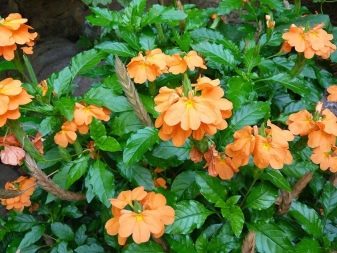
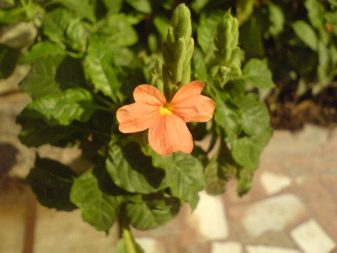
Types and varieties
About 60 species of crossandra have been identified in the wild. From this impressive list, botanists were able to adapt the funnel-shaped, as it is also called, wavy, crossandra to the room habitat. As well as prickly, Nile and Guinean, although the last three items are rarely grown at home.
The funnel-shaped crossandra, in turn, succumbed to domestication. By crossing, breeders were able to breed her domesticated hybrid varieties.
Funnel-shaped
The presented type of bush is the progenitor of many varieties of hybrids. It occurs naturally in India. In its natural habitat, the shrub grows up to 1 m in height, and the flower, adapted for indoor cultivation, does not exceed 70 cm. The inflorescence of the funnel-shaped crossandra in appearance resembles a dense cob. Flowers on the surface of the bush are distinguished by bright fiery shades in the shape of a funnel, the diameter of which is 3 cm.
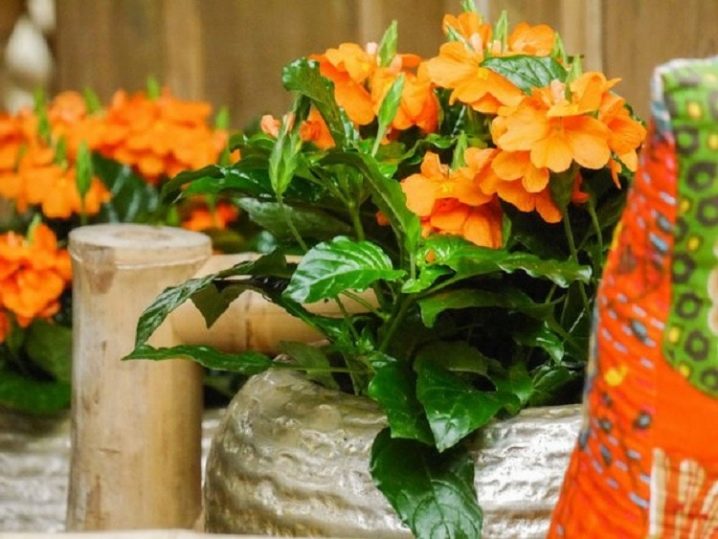
Blue
This type of flower has a second name "ice blue". The shrub does not differ in compacted inflorescences and lush forms. During the flowering period, bluish flowers appear on its surface, resembling small pieces of ice.
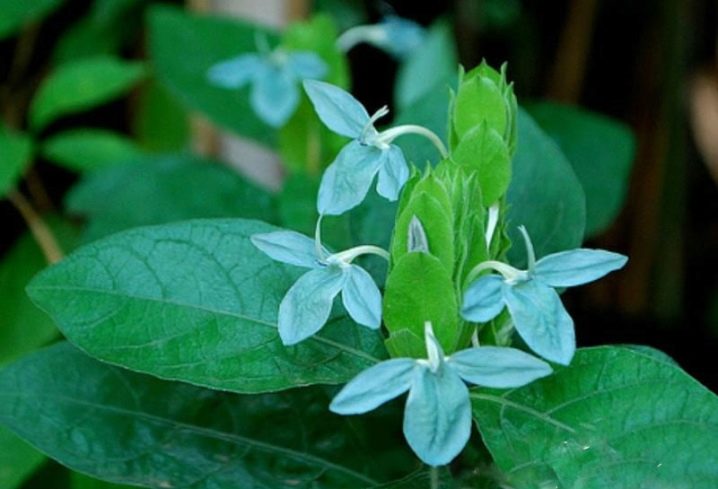
"Green ice"
This type of flower is extremely rare in apartments and houses. In shape and appearance, it is very similar to its sister, the blue crossandra. Although the foliage of the represented variety of the bush is much larger, and the shade of the blossoming flowers is brighter and more saturated.

Nile
Africa is considered the homeland of origin. The flower is not tall in size, its maximum length is 60 cm. The leaves of the bush are presented in dark green color, slightly omitted in structure. The blossoming flowers have five petals during flowering. Each individual petal has a different color scheme. The coloring ranges from reddish to pinkish orange.
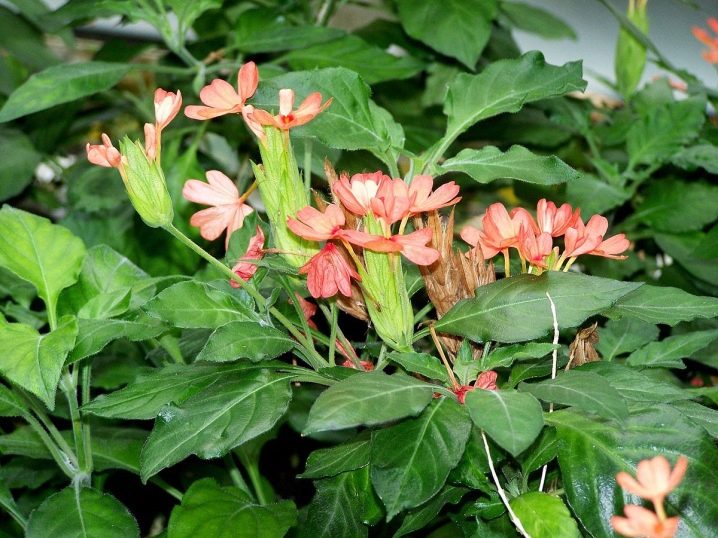
Prickly
A dwarf species from African lands. The maximum plant height is 13 cm. The leaf plate is decorated with a special pattern along each vein. The inflorescences of the plant are presented in yellow-orange shades. Looking closely at the bracts, you can see small thorns, soft to the touch, thanks to which the flower got its name.
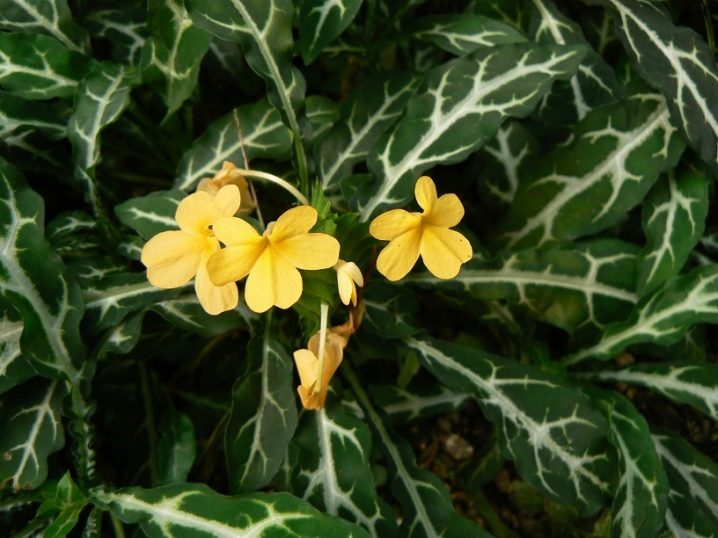
When growing crossandra, flower growers mainly use the funnel-shaped species or its hybrids. Below is a list of its most famous varieties, often found on window sills.
"Tropic"
The presented indoor flower has a compact size, its maximum height reaches 25 cm. The hybrid was bred by American growers, on sale it can be found in a wide variety of colors. The most popular is the yellow variety. The color variation Red represents the petals of red and pink shades. You can grow this plant at home in a pot or in a garden.
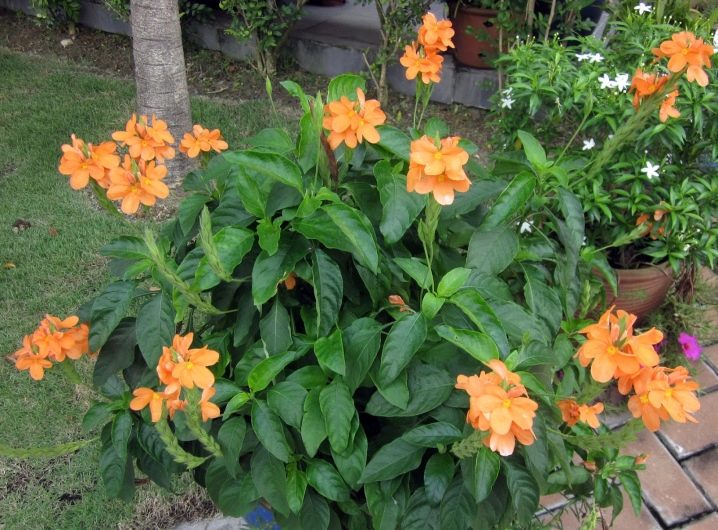
"Fortune"
Quite a popular plant variety with compact size, the height of which is a maximum of 30 cm. Due to the small size of the buds on the bush, it blooms much more, and the flowering period lasts much longer. A distinctive feature of the hybrid bush is long life and good health.
Particular attention should be paid to the root system, which is characterized by an increased level of endurance.
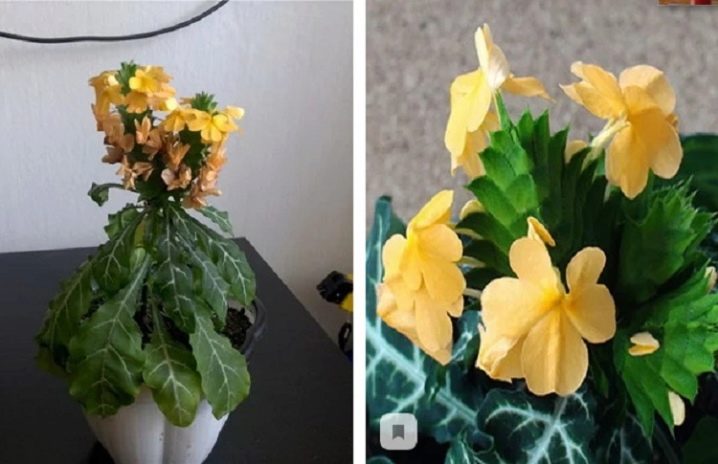
Variegated
Colorful novelty. The green leaf plates of the bush are covered with an unusual pattern made of whitish spots and small strokes. Flowers blooming in a crucial period of life resemble spreading fireworks of a coral hue.
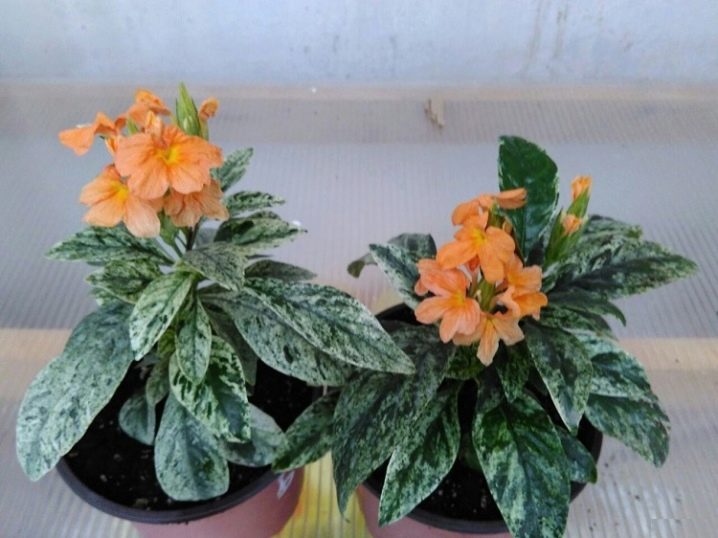
Landing rules
Crossandra, by nature, does not take change very well. After the planting and transplanting procedure, the plant gets used to a new container with soil for a long period. Quite often, a delay in the flowering process is observed, sometimes the foliage curls into tubes and falls off.
The most successful time for planting crossandra at home is spring and summer, although breeders planted cuttings all year round. At the same time, noticing that in winter the growth and development of embryos proceeds much more slowly.
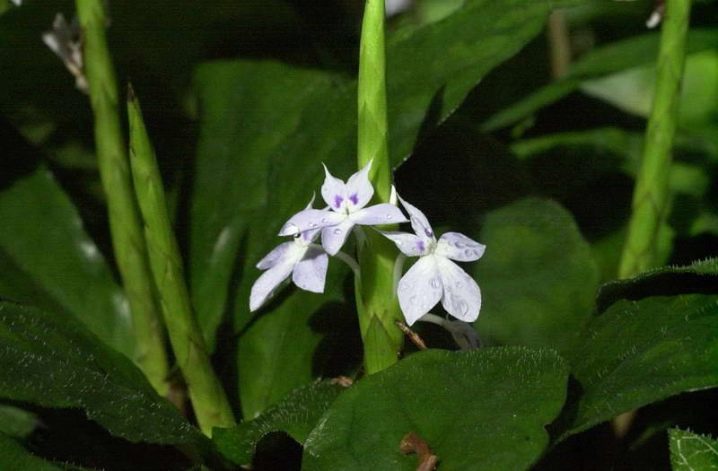
For self-planting or transplanting a crossandra, a florist needs to prepare the soil. It should be porous and neutral. When using universal soil, you will need to add a small amount of coarse sand. In the absence of trust in purchased potting soil mixtures, a florist can create a soil for planting on his own.
- In the first version of the blank, it is proposed to mix sod land with coarse sand in the same quantity, then add the broken brick.
- In the second case, the florist will have to take 2 parts potting soil for indoor flowers with one part vermiculite and special soildesigned for succulents.
- The third method suggests mixing 2 parts of leafy soil and peat bog with one part of sand and turf.
We must not forget about the drainage system. It can be made of expanded clay, crushed pebbles or bricks.

Having familiarized yourself with the properties of the soil required for planting the crossandra, you can begin to study the process itself in the form of step-by-step instructions.
- The soil prepared for planting must be calcined. Pour boiling water over the pot for heat treatment.
- Drainage is laid at the bottom of the treated container, a small amount of planting soil is poured on top.
- It is important to note that the flower also needs some preparation for planting., therefore, 3 days before the scheduled event, the plant must be stopped watering. The old soil will dry completely, so that the crossandra will be released from the old pot. A lump of earth on the root system must be gently shaken off.
- The taken plant is placed in the center of the new container., its roots are distributed in the inner space of the pot.
- Next, you need to fill in the gaps between the walls of the container and the plant itself, while trying not to hook or injure the thin and delicate roots of the crossandra.
- After planting, the flower should be watered and sprayed onto the crown of the bush. In this case, moisture helps the plant to take root in a new place without stress.
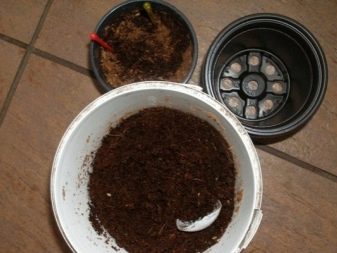
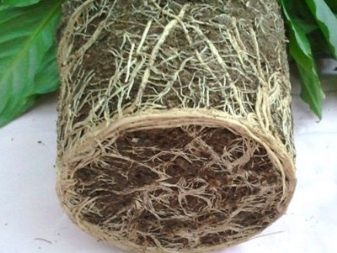
Care features
Crossandra require careful attention to the conditions of their detention.
In the process of growing a plant, the florist must remember its tropical roots, which speaks of the love of the crossandra for a warm habitat.
In general, the temperature in the room where the crossandra is grown should not fall below +18 degrees Celsius. If necessary, it can be moved to another, slightly cool room, but for a short time.
In the summer season, the crossandra feels comfortable on the sunny side of the window, under diffused light. Direct sunlight inflicts severe burns on the flower, which are clearly visible on the leaf plates of the bush and on the petals of the buds.
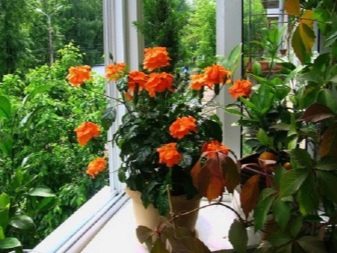
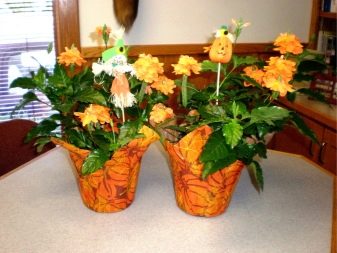
If there is a shortage of lighting, the leaves of the crossandra will begin to fold, and the flowering process will stop. Quite often, a similar problem occurs in winter.
When purchasing a crossandra in a store, a florist should think about transplanting a plant from a transport soil into natural soil for its subsequent cultivation. The time between purchase and transplanting should be approximately two weeks for the plant to adapt. After the crossandra gets used to the new conditions, it can be transplanted.
The past acclimatization will help the flower to treat this procedure less painfully.
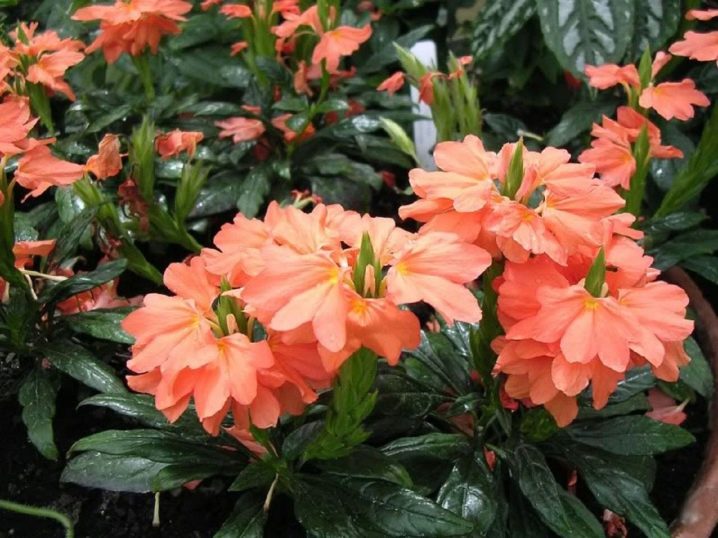
Florists should know that young crossandra is transplanted once a year. Its adults are representatives every 2 years. The transplant is carried out in the spring. Pruning of the plant is done with the arrival of heat and before winter rest.
The dormant period of the crossandra is winter. At this very time, there is no need to feed her with useful substances. Otherwise, instead of buds, she will begin to dissolve a huge number of leaves. With proper care, the enrichment of the plant with vitamins and nutrients should begin with the arrival of spring. Top dressing is done once a week. Fertilizers can be organic and mineral, although mineral fertilizing is much more convenient and profitable.
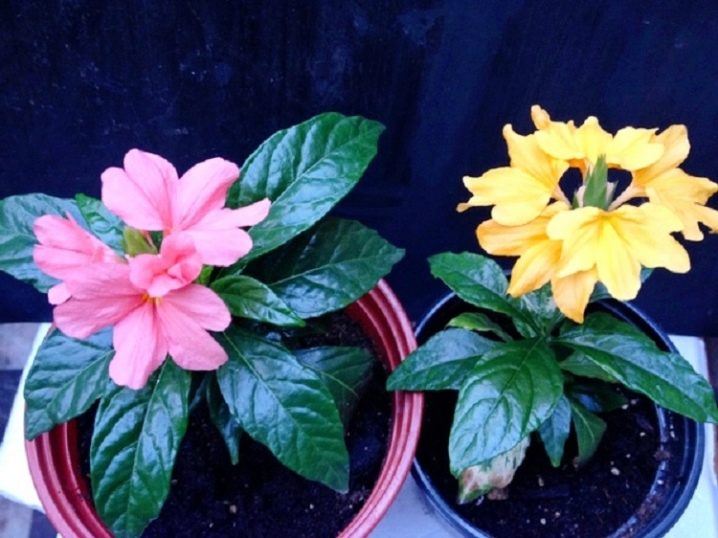
Krossandra is extremely scrupulous about watering procedures. The better the plant is moisturized, the longer and more luxuriant the flowering process will be. Watering itself depends entirely on the season. In summer, it is necessary to moisten the soil more often, since the soil dries out very quickly. With the onset of cold weather, watering should be moderate, in winter the plant's need for moisture is reduced several times. It is optimal to water once every two weeks, but do not forget to check the soil. Do not allow the overflow of the flower and dryness of the soil.
In general, it is a pleasure to take care of the crossandra.With the right approach, she will respond with bright blooms, reminiscent of fireworks.
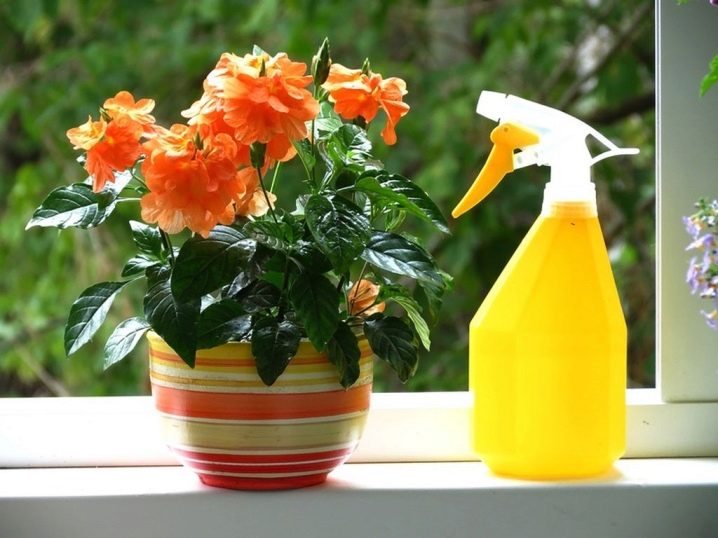
Reproduction methods
The procedure for breeding crossandra at home occurs in two ways: by planting seeds and dividing cuttings.
Way seed reproduction it is used extremely rarely, only when it is not possible to separate the stalk from an adult flower. In addition, growing crossandra from seeds is considered a rather troublesome and time-consuming process. Next, we suggest that you familiarize yourself with the step-by-step sowing instructions.
- The seeds must be sown on the surface of the prepared loose soil. For successful development, the air temperature should be maintained at about 22 or 23 degrees Celsius. The soil composition should not be watered, it is enough to lightly spray.
- As soon as the leaves appeared, the seedlings must be transferred to cups of water.
- When transferring a seedling, a pinching procedure is performed... This measure is aimed at increasing the deciduous properties of the bush.
- When the seedlings are stretched up to 10 cm, they need to be transplanted into pots.
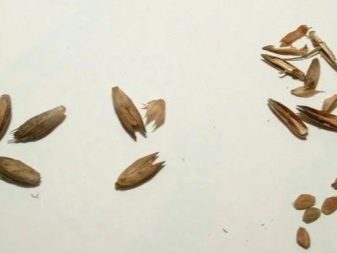
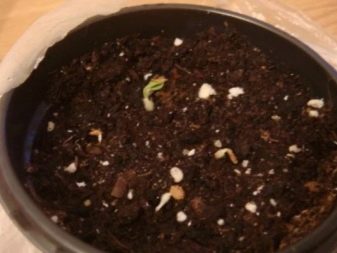
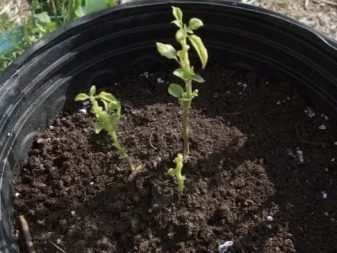
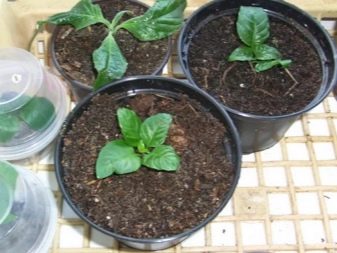
Division of cuttings - the most common and very convenient way to propagate crossandra in a room environment. Most florists who grow crossandra at home resort to it.
- An adult flower with a small stalk must be detached from the side.
- From the bottom of the cutting leaves are cut off, then the baby is transferred to a container with water.
- When the cutting has an independent root system, it is transplanted into a pot. The grower should give the new plant some time to adapt, and then proceed to the standard procedure for growing the plant.

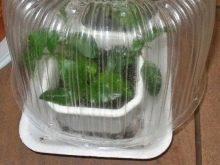
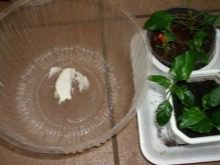
Diseases and pests
Growing crossandra, some growers are faced with various ailments that can affect flowering healthy plants.
- Leaf mold disease most often occurs due to heavy watering. For treatment, it is necessary to temporarily reduce water procedures. And cut off the leaves with mold. For prevention, the plant will have to be treated with a fungicide. Until the crossandra recovers, it must be isolated from other indoor flowers.

- Insects attack crossandra extremely rarely. But with prolonged growth in low humidity, aphids or spider mites can start. If the florist has managed to capture the primary appearance of these pests, it will be enough to simply rinse the plant with water. The main thing is not to overmoisten the soil composition of the flower during the shower. If the grower later identified the occurrence of pests, and they managed to multiply, you will need to apply insecticides.
As a preventive measure, it is necessary to maintain high humidity in the room where the crossandra grows.
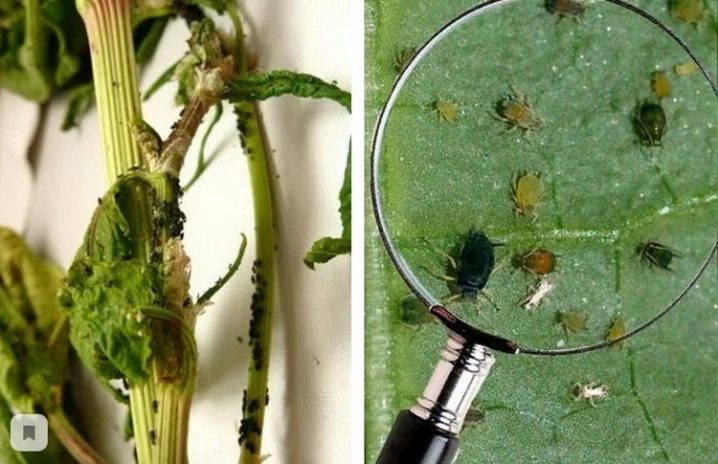
- Novice growers, when growing crossandra, may face the problem of foliage falling off. This is due to a lack of moisture and drying out of the soil composition. The leaves of the crossandra do not fall off immediately, at first they wither, which is already considered a signal for an increase in the humid environment.
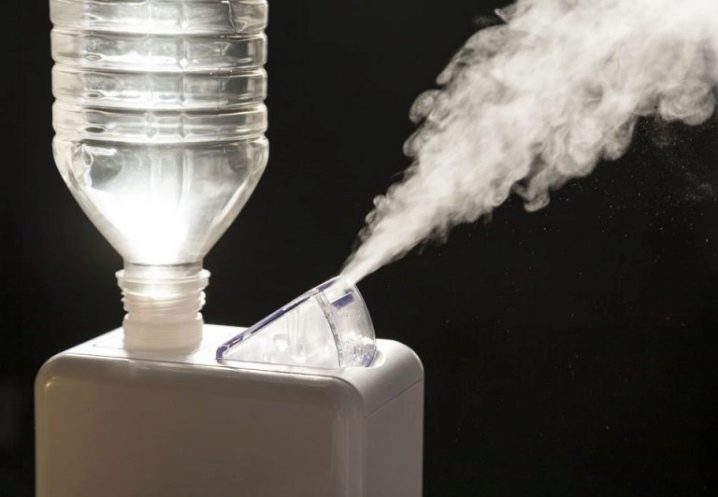
- Some growers are faced with the lack of flowering of the crossandra. To solve the problem, it is enough to move the flower pot to a place with good lighting, or arrange additional artificial lighting. In addition to the lack of lighting, the lack of buds may be due to improper pruning of the seedling.
In addition, the age of the flower also affects the flowering process. After four years of life, the crossandra decreases the duration of flowering and splendor.
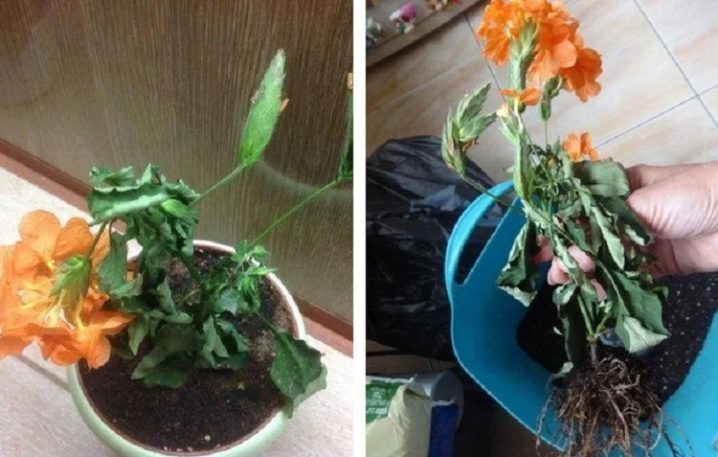
- Some growers complain that the leaves of the grown crossandra turn red. The solution to the problem is to rearrange the flower pot away from direct sunlight, since this color change indicates burns on the leaf plates. To restore the natural shade of the foliage, the crossandra needs some time away from bright lighting.

- Other growers have a problem with blackening of the leaves. This color change mainly occurs in winter, when the temperature in the room where the flower is kept falls below the acceptable limit.
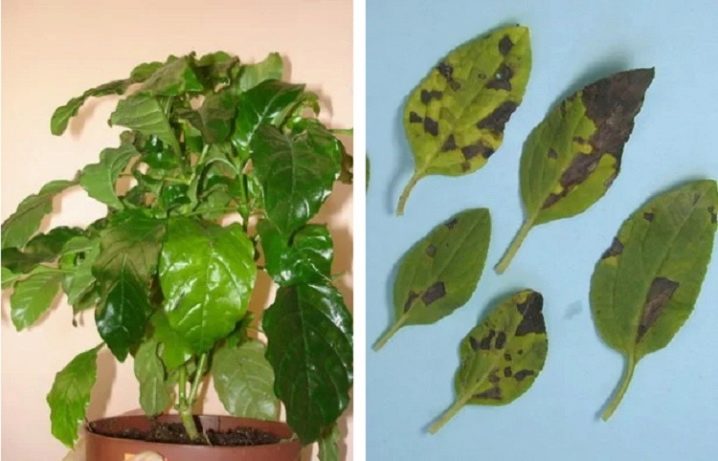
In the absence of sufficient watering, the foliage of the crossandra drops. The appropriate solution is to increase the liquid both in the irrigation and in the ambient air.
How to care for a crossandra at home - watch the video.























The comment was sent successfully.